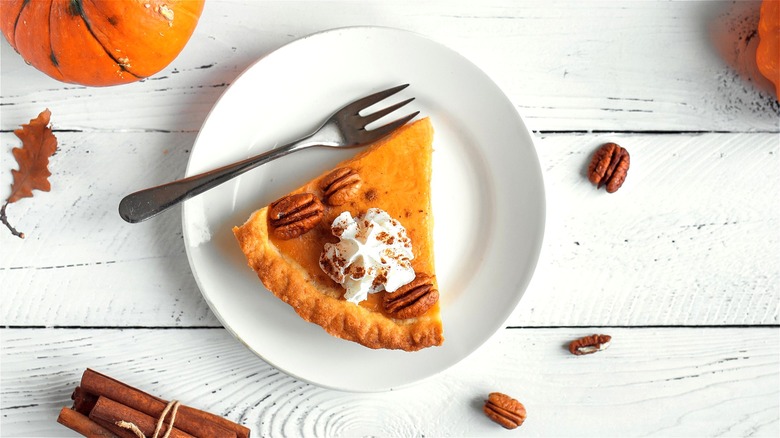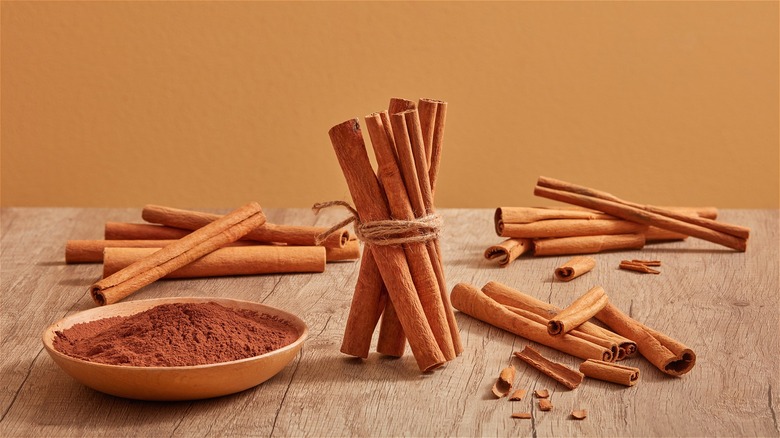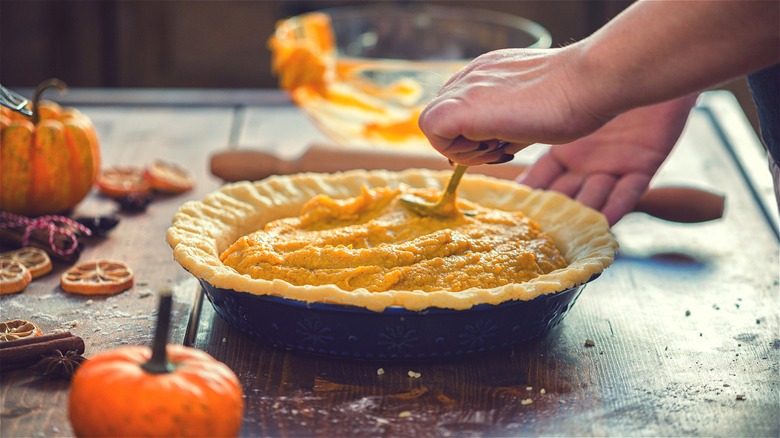The Subtle Ingredient Swap That Adds Some Extra Spice To Pumpkin Pie
With autumn in full swing, you might be doing more than just visiting local apple orchards or decorating your porch with seasonal flair; you're likely also thinking about this year's Thanksgiving menu. Perfecting the roast turkey and your creamy mashed potatoes is important, but creating a delicious and flavorful pumpkin pie is often a top priority, too. You might have made enough pumpkin pies by now to feel confident in roasting your own pumpkin and making your own pie crust from scratch.
Despite your go-to list of essential ingredients, there's one adjustment you might consider making to your typical pumpkin pie seasoning. Whether you opt for store-bought pumpkin pie spice or mix your own blend, the type of cinnamon you choose can be a game-changer. There's a strong chance you've been purchasing regular cinnamon at the supermarket, assuming that all ground cinnamon varieties are alike. In reality, there are four different types of cinnamon harvested globally, and Saigon cinnamon — also called Vietnamese cinnamon — offers the most robust flavor due to its high volatile oil content. If you're looking to infuse your pumpkin pie with a more pronounced cinnamon flavor, Saigon cinnamon is your best bet.
The different types of cinnamon
While many different types of cinnamon are available worldwide, cassia cinnamon — which comes from the inner bark of an evergreen tree — is probably the most common and widely accessible variety in the U.S. This type of cinnamon has a bold, intense flavor and primarily comes from China, Vietnam, or Indonesia. On the other hand, Ceylon cinnamon — often referred to as "true" cinnamon — is native to Sri Lanka and southern parts of India. It possesses a lighter, delicate, and more spicy flavor than cassia. The sweet taste of true cinnamon complements desserts beautifully, making it a great option for warm winter delicacies.
But if you want to add some real extra spice to your annual pumpkin pie, Saigon cinnamon boasts a uniquely strong and potent flavor. This is because this variety has a higher concentration of cinnamaldehyde, a compound that makes Saigon cinnamon taste exceptionally sweet and robust.
The ins and outs of Saigon cinnamon
Luckily, incorporating Saigon cinnamon into your easy pumpkin pie recipe is quite straightforward, as this specific variety is widely available in various online and in-store retail markets. To ensure you're purchasing true Saigon cinnamon, look for labels that explicitly state this. Although Saigon cinnamon is highly prized for its sweet and robust flavor, it generally remains more affordable compared to Ceylon cinnamon, which has a subtler flavor but a higher price point.
However, before you start adding extra teaspoons of Saigon cinnamon to your pumpkin pie batter, be aware of the risks associated with overconsumption. According to Healthline, Saigon cinnamon is rich in coumarin, a naturally occurring compound that can become toxic when consumed in large quantities. Therefore, it is recommended to limit your intake to no more than one teaspoon of Saigon cinnamon per day. That said, because Saigon cinnamon's flavor is so potent, a small amount may be all you need to enhance the taste of your next show-stopping pumpkin pie.


